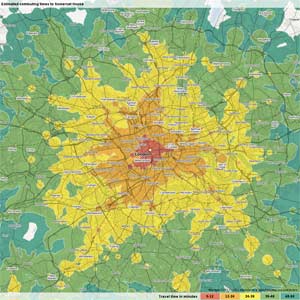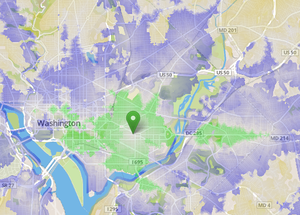(Motivated as part of work towards the OSSTIP project)
There are now multiple mature general Open Source GIS data-serving platforms such as [GeoServer] and [MapServer], as well as capable desktop GIS applications such as Quantum GIS ([qGIS]) and GRASS GIS. The excellent [OSGeo] organisation's website maintains a useful listing of these, as well as links to individual projects.
In recent years though, several open source extensions to GIS platforms such as these, and also free-to-access web GIS mapping platforms like Google Maps, have developed to allow analysis and evaluation of the effectiveness of a public transport network, in line with new knowledge about public transport best practice such as Integrated Multimodal Network Planning. These kinds of tools are a particular form of Transport informatics.
Many of these allow various forms of visual display and analysis such as in the form of Travel Time Maps. This supports a better visual evaluation and communication of the 'geography of mobility and accessibility' provided to public transport users under a given scenario. These could well be included in Indicator frameworks as an important aspect of assessing a city's provision of urban services to residents.
And notably from a Community Informatics perspective, several of the tools originated or had significant input from civil society non-profit organisations in their development, and their open source nature means that groups with sufficient expertise can utilise them.
Tools Surveyed for Analysis
| Name | Sample Pic | Homepage |
|---|---|---|
| Mapnificent | (None yet) | http://www.mapnificent.net |
| Mapumental |  |
http://mapumental.com/ |
| Graphserver | (None yet) | http://graphserver.sourceforge.net/ |
| OpenTripPlanner |  |
http://opentripplanner.com/planners-researchers/ |
External Links
- There is a nice short discussion of different Open Source Tools relevant to participatory transport planning over at http://openplanningtools.org/ParticipatoryPlanning/Software
- http://bit.ly/leverage-gtfs is an excellent resource developed by Aaron Antrim of www.trilliumtransit.com about the GTFS open data standard, and how it can be used to support public transport planning, operations, and research.